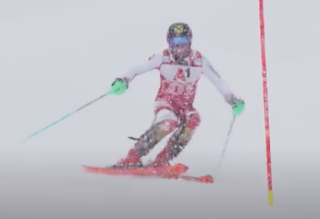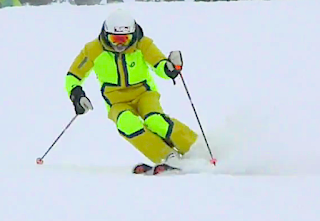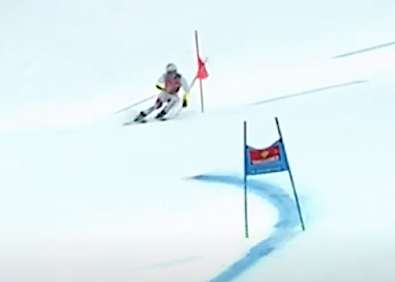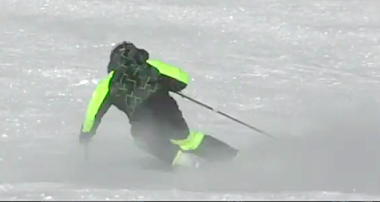I often show my students how to determine if they are pivoting, hip thrusting, or extending too much into the new turn by showing them this very simple "tell".
This is a turn completion which is at the bottom of the arc that requires bending and or retraction of the feet and knees to link a new pure carved turn.
In the frame below, the transition to the new edges has begun; the retraction (bending the outside knee and leg) isn't yet completed on the lower or outside leg to match the knee bend of the upper leg.
Now the retraction is complete demonstrated by both knees bending equally and the skis flat to the snow surface.
Now we are at the "CRUX" of the matter. This frame is the "High C" part of the initiation. It point in an arc tells you if you are truly carving or faking. If the tails of the skis go uphill at this point you pushed yourself out of the previous turn and you would see snow spraying off the skis. Other reasons the tails of the skis might go uphill are, that you used too much hip thrust to counter your body or you pivoted your feet while the skis were flat. If the tails follow the tips without a snow spray coming off the tails you have tipped your lower body properly onto a new set of edges and your skis are set on new edges. Your skis are set and have angles that develop for the new turn.
The movements that continue to develop a carved high-edge angle turn are inside ski tipping, leg bending, and hip relaxation. The result is a purely carved turn that leaves only two finely described circular edge lines showing an arc in the snow.
The upper body's role in this is to increase and create counteracting appropriately for the position of the skis to the falline.































